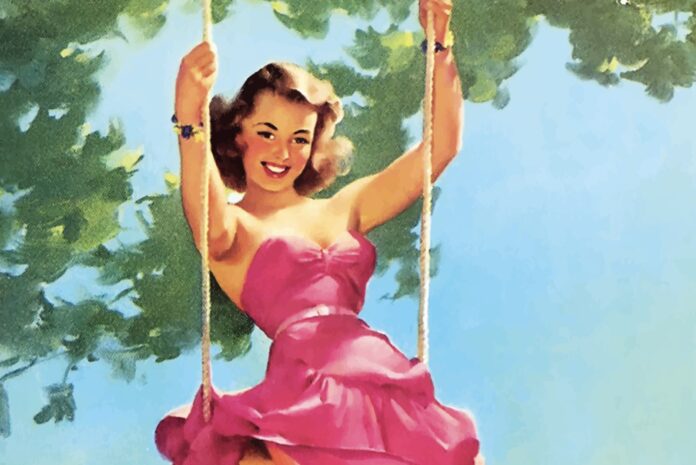For women, menopause is a sort of rotten reward given to those lucky enough to dodge tragedy and receive the privilege of growing old. Anyone who has experienced it understands the impact, and most women have some idea of what to expect. Real talk – hot flashes are no fun, insomnia can wreck your day and a decreased sex drive, well, you get the idea.
But times are changing both in the way we manage symptoms and, perhaps more importantly, in how we view this segment of a woman’s experience.
First, a primer for younger women, all men (because, guess what, this affects you too, as you support partners, parents and friends), or anyone who has yet to find the information they need. Women will typically experience three stages of menopause. Perimenopause is the lead-up that generally starts in a woman’s 40s, though it can be earlier or later depending on health histories, hormonal balances and the thousand tiny factors that make us each a unique human. Perimenopause brings on the first hint of symptoms. Women in this stage still ovulate and have periods, but may experience irregularities.
After a few years, sometimes a solid decade, women enter menopause. This stage sees the cessation of ovulation and menstruation. Symptoms intensify. We get to add fun bonus items, like thinning hair and urinary incontinence, to our journey. But, there’s light at the end of that tunnel.
After a full year with no menstruation, a woman is considered to be in the post-menopausal stage. Symptoms relax. We get to take a breath and at least enjoy the fact that we’re finally done with pads, tampons, cups and other instrumentations of monthly torture. This stage also requires special attention, though, as the decrease in estrogen can exacerbate osteoporosis and heart disease.
If your takeaway at this stage is that women never get a break, you’re right. We’ve literally been telling you this for years. Thankfully the last few years have seen a shift in reactivity. For the past … well … forever, women have been left to muddle through. In fact, until the last midcentury mark, our collective approach to women’s health was, “Buck up, buttercup.”
The first wave of feminism caused some ripples in advocacy, but the result mostly leaned toward medications and heavy hormonal treatments. Mask everything so you can “buck up, buttercup.” Now, finally, health care seems to be noticing that more than half the population deserves special holistic care. Hormone replacement therapy (HRT) remains the top treatment for symptoms, but many doctors and hospitals are investigating alternatives for women who simply don’t want, or don’t respond to, HRT. Non-western supplements are gaining popularity, as is a more in-depth focus on physical activity, nutrition and other components of a healthy lifestyle.
As our attitudes toward treatment shifts, so does our cultural recognition of something that is just so unbelievably normal. Perhaps even more important than the development of alternative treatments is the growing understanding of the social and emotional elements of all three stages of menopause.
At its core, menopause is a cultural construct. New studies quantify the experience through lenses of biological, psychological, environmental and sociocultural. To which women everywhere are uttering a collective “Amen!” Because women know this life stage transcends the very real, and often miserable, physical symptoms. In addition to navigating the physicality of menopause, women are also forced to contend with an unfair view on female aging that focuses on menopause as a punctuation mark. Aging in men is viewed as a linear experience – something progressive and subtle. Women are seen in more stark terms of before and after. Menopause has become the marker wherein a woman loses her vitality, youth and sexuality. One day she’s young; 12 months later, she’s old. It’s a very unforgiving bell curve.
It comes as no surprise then that women, bolstered by increased visibility, are raising their middle fingers in a salute to the industries informing them of their age. Beauty industries have made empires preying on women’s insecurities, as women over 50 spend over $22 billion annually in the U.S. alone, accounting for more than half the market. But audience opinion is shifting, forcing these industries to adapt.
In 2017, Allure magazine banned the term “anti-aging” from its publications, with then-editor Michelle Lee explaining, “We were subtly reinforcing the message that aging is a condition we need to battle. Changing the way we think about aging starts with changing the way we talk about aging.” The AARP drafted a letter of solidarity. Women like Jane Fonda, Helen Mirren and Angela Bassett stepped into roles as models and spokeswomen. The beauty industry gulped.
This long overdue shift toward increased inclusivity is having a positive effect. We can’t change efforts and outcomes without changing outlooks. We can’t progress our development of treatments without creating a structure of understanding.
Each progressive generation is more vocal, more open. We’re talking about our experiences. Because, like it or not, more than half of us will experience this shift in our lives. It’s about time the other half of society noticed and offered to assist.


























